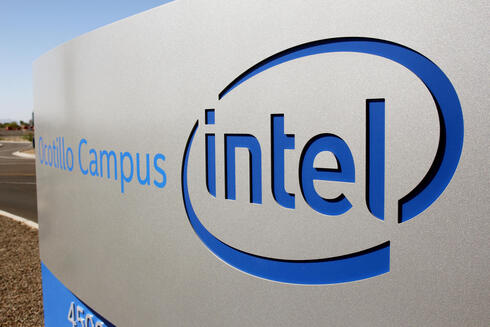
Intel laying off more than 15% of workforce, cutting costs by $10 billion
The chip giant said it will part ways with around 15,000 employees globally by the end of the year after registering a loss of $1.6 billion in the second quarter of 2024.
Intel missed expectations and announced a cutback plan to the extent of $10 billion that will include extensive layoffs of more than 15% of the workforce - approximately 15,000 employees, according to its quarterly reports published on Thursday. The company's stock, which closed down 5.5% in Wall Street trading, lost 16% in late trading.
The chip giant's revenue in the second quarter of 2024 was $12.8 billion. This is compared to the forecasts of analysts who expected the company to have revenues of $12.9 billion. This is a decrease of 1% compared to the corresponding quarter last year. Bottom line, Intel went from a net profit of $1.5 billion to a loss of $1.6 billion. The loss per share was 38 cents, compared to analysts' forecasts that expected a profit of 10 cents per share.
"The company will streamline its operations and meaningfully cut spending and headcount, reducing non-GAAP R&D and marketing, general and administrative (MG&A) to approximately $20 billion in 2024 and approximately $17.5 billion in 2025, with further reductions expected in 2026," Intel said.
At the same time, Intel is reducing its gross capital expenditures by more than 20% this year (compared to earlier forecasts), and estimates that they will amount to between $25 billion and $27 billionNet capital expenditures are expected to range between $11 billion and $13 billion. Next year, Intel is targeting gross capital expenditures of $20 billion to $23 billion, and net capital expenditures of $12 billion to $14 billion.
Another move is to suspend the dividend starting in the fourth quarter, while also reducing cost of sales. "The company expects to generate $1 billion in savings in non-variable cost of sales in 2025," it said.
Alongside this, Intel states that it will maintain the core investments necessary to implement its strategy: "The company continues to advance its long-term innovation and path to leadership across process technology and products, and the increased efficiency from its actions is expected to further support its execution. In addition, Intel continues to sustain investments to build a resilient and sustainable semiconductor supply chain in the United States and around the world."
In dividing Intel's revenues by business divisions, Intel's core product activity (chips for personal computers, data centers and networks) recorded an increase in revenues of 4% to $11.8 billion. This, as a result of a 9% increase in the income of the personal computing group to $7.4 billion. Intel's data center and AI operations - the group that is supposed to compete with Nvidia - actually fell by 3% to $3 billion, and revenues from networking products fell by 1% to $1.3 billion.
Intel's foundry activity (making chips for other companies), which is at the heart of CEO Pat Gelsinger's revitalization strategy, registered an unimpressive growth of 4% to $4.3 billion. Mobileye's revenues fell 3% to $440 million.
In the current quarter, Intel expects revenues of between $12.5 billion and $13.5 billion, a figure that represents a decrease of between 5% and 12% compared to the third quarter of 2023. In the bottom line, Intel estimates that it will go from a net profit of 3 cents per share to a loss of 24 cents per share.














